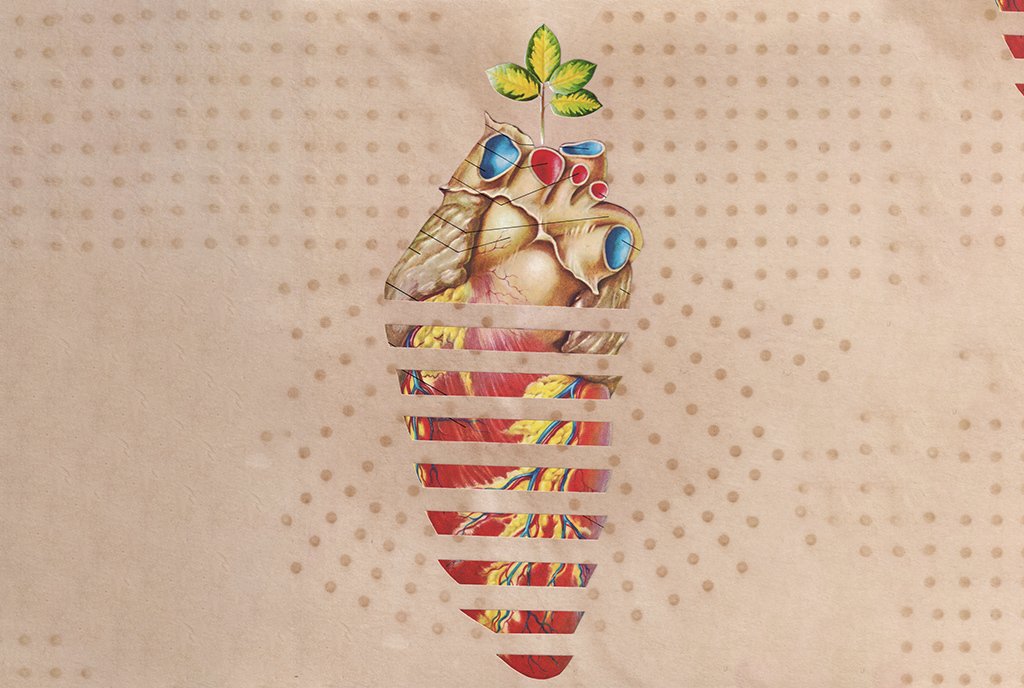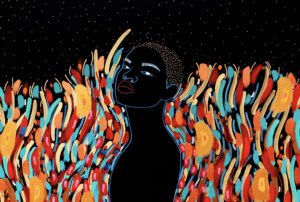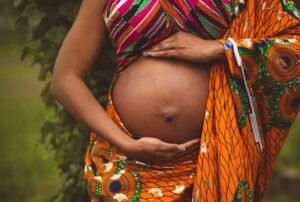
Editors’ note: This piece is from Nonprofit Quarterly Magazine’s winter 2023 issue, “Love as Social Order: How Do We Build a World Based in Love?”
This article was adapted from “Activating Loving Awareness through Contemplative Technology” by Sará King, published in Can AI Heal Us?, ed. Angel Acosta (House of Beautiful Business and Acosta Institute, September 2023). It has been adapted with permission.
As a neuroscientist, I am sometimes asked if I receive pushback for talking about love and loving-awareness in my research. Love as an act, a presence, a skill, a relational orientation, and an intention to be actively cultivated is not a phenomenon that we can measure holistically in any quantitative sense. However, many of our greatest discoveries in science in the past decade in the fields of quantum physics, quantum computing, astrophysics, and cosmology have come from teams of dedicated scientists testing theories that are decades (if not over a century) old—until one day they find a data point that begins to confirm the possibilities their models alluded to all along. In some ways, I look at the process of researching wellbeing, social justice, and even love in a similar light. We cannot say that we know as a whole what these phenomena are, but we have caught glimpses in our models that these realities are possible; and, therefore, we have hope that our combined creativity, imagination, collaborative abilities, and technological innovations will shed light on these future collective realities.
Perhaps because I was trained academically in the social sciences during my undergraduate career—exploring and getting degrees in linguistics, African American studies, and political science before I pursued neuroscience—my mind is oriented toward including phenomena that are qualitative, subjective, and felt in nature, toward the goal of creating interdisciplinary spaces where the ineffable and the objective can together flow naturally into an ever-evolving storyline. I am convinced that a critical part of doing science that is innovative is grappling with the theoretical, the liminal, or the things that we cannot say for certain exist in the same way for everyone but that we intuit are necessary components of the picture of human consciousness to which we are attempting to give shape and voice. There is this aspect of exploration and adventure that occurs at the very edges of the human imagination that I love about my profession. So with that in mind, I talk about love and loving-awareness not as phenomena of which I purport to be an expert but rather as “North Stars,” to exemplify a way of being toward ourselves and one another that I think encapsulates what it might mean to live in a state of individual and collective wellbeing. The central thesis I operate with is that the more we learn to love ourselves and to express this love in our relationships with one another, the greater the health, vitality, authentic care, and wellbeing we will all experience.
A central aspect of cultivating this love I am speaking of—in the way that Dr. Martin Luther King Jr. spoke of “agape”—is to cultivate awareness of self, consciously. By this, I mean it is all too easy to move through life on autopilot, living from a place of emotional and behavioral reactivity that aims to blunt or ignore the enormous information coming from our internal experience of self, and that reacts to external stimuli either by running, fighting, freezing, or appeasing to ensure that we survive—that is, operating from the autonomic nervous system’s trauma response. This is, of course, a simplification of the complexity that is actually happening within our daily experience of life, but it also describes what life in survival mode feels like, which thousands of people have described to me in my trauma-healing work and research. People tell me that they sometimes feel they are grasping from moment to moment for a feeling of true belonging, connectivity, and empathy in their homes and workplaces, but instead feel depleted by the nonstop expectation that they perform some semblance of perfection and productivity while the world is literally burning down around us. This can produce feelings of great cognitive dissonance. We know that interconnection and interdependence are our birthright, but they can feel so mystifying, because it seems too hard to get there, and violence and separation of all kinds seem so persistent.
The central thesis I operate with is that the more we learn to love ourselves and to express this love in our relationships with one another, the greater the health, vitality, authentic care, and wellbeing we will all experience.
Our world is moving at such a frighteningly fast pace, and it feels impossible to move every day at the speed of capitalism. The frenetic energy of work, and the labor that is required to make a basic living, can seem untenable to a person who also wants to experience rest, rejuvenation, moments of slowing down, and connecting with oneself, others, and the environment—all things we need for our wellbeing, and all of which need to be supported by our external cultures/society. The conscious cultivation of awareness, or the application of awareness-based practices that teach us how to pay attention to our own experience as a witness—and therefore a subject of life rather than an object that life is happening to—can be incredibly empowering. Our capacity to gently encourage and guide our attention back to our body in the present moment and sense into what we are thinking, feeling, emoting, remembering—or how our bodies are moving in space relative to other bodies and objects—is a superpower that should be developed and not taken for granted. In a world in which we must constantly question the “realness” and authenticity of the stimuli that we encounter, developing space that empowers us to tap into our capacity to know our own experience as valid and real might be one of the greatest gifts we can give ourselves.
Sign up for our free newsletters
Subscribe to NPQ's newsletters to have our top stories delivered directly to your inbox.
By signing up, you agree to our privacy policy and terms of use, and to receive messages from NPQ and our partners.
I want to emphasize here that I don’t believe that cultivating awareness of self in the present moment is enough to move toward healing or wellbeing. You can become as aware as you want of what is happening inside you, as well as in the world, and not be motivated to act toward the benefit of anyone other than yourself—meaning, the skill of being aware can reach the wall of the self and go no further. I am passionate about exploring the question of what loving-awareness is and how we can build it as a skill set individually and collectively, because then we can consciously turn toward emotional states such as gratitude, acceptance, loving-kindness, compassion, and relational practices like forgiveness, and see how their application in the context of cultivating awareness may be integral to our ability to bring healing to our own hearts as well as to local and global communities.
From 2019 to 2022, I conducted quite unconventional research on the science of social justice, or SSJ, fostered by and developed as part of a National Institutes of Health–sponsored postdoctoral fellowship in neurology at Oregon Health & Science University—in other words, this unconventional work was sponsored by a conventional government entity. It is important for the public to know that novel approaches to healing are receiving support from some of the highest institutions of science and medicine, and we must always ensure that current and future generations of scientists know that this kind of work is valuable and will be funded. I define SSJ as the study of the intersectional biopsychosocial impact of the psychological (mental), embodied (physiological), and relational (relationship-based) intergenerational trauma that has resulted from centuries of systemic and institutionalized oppression of marginalized populations here in the United States.1 It is the scientific study of how systemic oppression has a combined physiological, emotional, and psychological impact on individuals and communities. (Of course, the work has global implications; I have since presented on the science of social justice in Spain and Australia.) My theory posits that the creative development and use of contemplative and embodied practices—which are biopsychosocial interventions (interventions that have impact on the physiological, psychological, and relational dimensions of our experience of health and wellbeing)—can be grounded in the investigation of how wellbeing relates to our identities.2 This can allow scientists and wellbeing practitioners to explore how to heal intergenerational trauma as manifested in both individual nervous systems and collective nervous systems (a term I have coined) to support a return to holistic health for both individuals and communities.
When I use the term social justice, I am being very specific. By social, I mean the relational field of our interbeing (as Zen Master Thich Nhat Hanh might describe our fundamental interdependence as humans); by justice, I mean loving-awareness in action. Defining justice in this way grounds the experience of justice in the experience of the body and in our capacity to develop awareness of ourselves in a way that is fundamentally oriented toward love. Of course, I am aware that there is no universal definition of what love is, but I feel for certain that most humans agree that when love is expressed, it is nonharming and nonviolent in nature and is the most powerful force for harnessing feelings of belonging, safety, and interconnectedness vis-à-vis our internal experience of self and other. When loving-awareness is put into action from a societal point of view, we just might see what collective healing looks like. I don’t believe we have ever experienced collective healing on our planet—otherwise, we would not be facing the polycrisis of climate change, wars, pandemics, and technologically exacerbated structural violence that we continue to face today.
While seeking to embody liberation, it is important to recognize the places in society that are suffering from systemic inequality and where pain, domination, and violence of all kinds exist. This approach to understanding individual and collective liberation is rooted in a fundamental compassion for all beings and a recognition that some are experiencing suffering and lack more disproportionately than others—due to historical and socioeconomic forces such as racialized capitalism, patriarchy, White supremacy, continued vestiges of imperialism, forces of colonization, and other methods of systematized disenfranchisement. We are at an incredible inflection point right now as a species, and all of our actions to heal ourselves and the planet have immense repercussions for our children and grandchildren. Our ability to develop greater loving-awareness just might make the difference between our survival as a species or not. If we evolve a way of visualizing our own and our collective nervous systems—and put attention to what we are both individually and collectively aware of, as well as to our blind spots—we might just be able to cocreate ecosystems that reflect healing, collective wellbeing, and loving-awareness in action.
Notes
- See Sará King, “The ‘Science of Social Justice’: An Interdisciplinary Theoretical Framework Grounded in Neuroscience, Education, and Anthropology towards Healing Intergenerational Trauma,” Journal of Contemplative Inquiry 9, no. 1 (2022): 210–41.
- In my research, I posit that the ways in which we identify impact the ways in which our stress response—as well as the trauma response of our nervous system—might get I also propose that this nervous system activation might be the result of intergenerational trauma responses that have been passed down by our ancestors, which is an epigenetic point of view.









